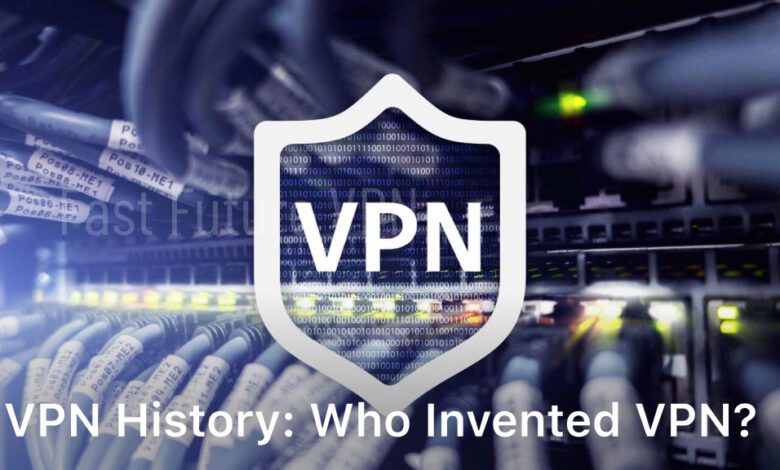
Before delving into the history of VPN technology, let’s first understand what VPNs are. VPN, or Virtual Private Network, is a tool used to establish a secure and private connection between two devices, even if they are not physically connected.
Nowadays, VPNs are widely used to protect online privacy, encrypt internet traffic, and bypass geo-restrictions. But have you ever wondered how VPNs came to be? In this section, we will explore the origins of VPN technology and how it has evolved over time. We will also investigate the key figures and innovations that have contributed to the development of VPN protocols.
By understanding the history of VPN, we can gain valuable insights into the development and growth of VPN technology. This will help us to appreciate the importance of VPNs and their impact on digital security and online privacy.
The Beginning of VPN Technology
Virtual Private Networks (VPNs) have come a long way since their inception. The origins of VPN technology date back to the early 1990s when corporations started using them as a solution to connect geographically dispersed employees securely. The concept of a virtual private network was first introduced by Microsoft in 1996 as part of the Point-to-Point Tunneling Protocol (PPTP).
The timeline of VPN development accelerated with the advent of the Internet, and in the late 1990s, VPNs became available to the public. During this period, several innovations helped lay the foundation for modern VPN protocols. One of the standout innovations was the development of the IPsec protocol, which offered robust encryption and authentication features for VPN connections.
The growing need for online privacy and security, coupled with advancements in technology, led to the evolution of VPN technology throughout the 2000s. Today, VPNs are an essential tool for anyone looking to secure their online activity and protect their sensitive data.
Early VPN Protocols and Innovators
The development of VPN technology required the creation of new protocols to address the challenges of securely transmitting data over public networks. In the early stages of VPN development, several innovators played crucial roles in shaping the protocols used to establish secure connections between remote devices.
One of the earliest VPN protocols was PPTP (Point-to-Point Tunneling Protocol) developed by Microsoft, which became widely used in the mid-1990s. However, PPTP’s encryption was deemed weak, and the protocol was eventually replaced by more secure alternatives.
In the late 1990s, a team of researchers at the University of California created IPSec (Internet Protocol Security), an encrypted security protocol that enabled secure communication between devices over a public network. IPSec became the industry standard for VPN protocols and is still widely used today.
Another notable contributor to VPN technology was Cisco Systems, which developed the SSL (Secure Sockets Layer) VPN protocol in 2003. SSL VPNs provided an alternative to IPSec by enabling remote access to web applications through a web browser. SSL VPNs quickly gained popularity due to their ease of use and compatibility with network infrastructure.
As encryption and network technologies continued to improve, VPN protocols evolved to address new threats and challenges. Today, VPNs use a variety of protocols, including OpenVPN, L2TP (Layer 2 Tunneling Protocol), and IKEv2 (Internet Key Exchange version 2), each with its own strengths and weaknesses.
Commercialization and Mainstream Adoption
In the late 1990s and early 2000s, VPN technology began to be commercialized and offered to the public, leading to its widespread adoption. As VPNs became more accessible, they quickly gained popularity as a tool for enhancing digital security and online privacy.
One of the primary factors contributing to the commercialization of VPN technology was the growth of remote work, which required secure access to corporate networks from external locations. Additionally, the rise of e-commerce and online transactions created a need for enhanced cybersecurity measures to protect sensitive personal and financial information.
The increased use of VPNs also had a significant impact on online privacy. With the use of VPN technology, individuals could browse the internet anonymously and protect themselves from data tracking and targeted advertising. As a result, VPNs became an increasingly popular tool for internet users looking to take control of their online privacy.
As VPN technology continues to evolve, its importance in enhancing digital security and online privacy remains crucial. By understanding the history and evolution of VPNs, we can recognize the value of this technology and its impact on our online lives.
Notable Contributions by Gurdeep Singh Pall

Gurdeep Singh Pall is a renowned figure in the world of VPN technology, having made significant contributions to its development and advancement. As a former corporate vice president for Microsoft’s Unified Communications Group, he oversaw the company’s efforts to improve the functionality and security of VPN protocols, as well as enhance their integration with other communication technologies.
Pall was instrumental in the development of Microsoft’s DirectAccess, a VPN technology that allows remote users to securely access corporate resources without the need for traditional VPN connections. He also played a key role in the development of SSTP, a VPN protocol that leverages SSL encryption to provide enhanced security.
In addition to his contributions to VPN development, Pall has been a vocal advocate for privacy and security in the digital sphere. He has spoken out on numerous occasions about the need for stronger encryption standards and better protections for user data.
Overall, Gurdeep Singh Pall’s contributions to the VPN industry have had a profound impact on the development and evolution of the technology. His innovative ideas and commitment to security and privacy have helped to shape the modern VPN landscape.
Evolution of VPN Technology
The development of VPN technology has been marked by several key milestones that have helped shape its present form. VPNs have undergone significant changes and adaptations to meet the changing needs of users and the evolving security landscape.
Increased Speeds and Compatibility
The first VPNs were slow and cumbersome due to limited bandwidth and outdated encryption methods. However, advancements in internet technology and more robust encryption techniques have led to significant improvements in VPN speeds. Additionally, VPNs are now compatible with an array of devices, including smartphones, tablets, and laptops.
Improved Security Protocols
VPN technology has also evolved to offer more robust security protocols. Modern VPNs often support multiple encryption methods, providing users with a range of options for securing their data. This helps users maintain their privacy and counter potential cyber threats from hackers, government surveillance, and other malicious entities.
Remote Access and Cloud Integration
VPN technology has also enabled remote access to information, allowing users to connect to company networks from remote locations. VPNs enable employees to work remotely while staying connected to their employer’s network. VPNs are also increasingly integrated with cloud computing, providing even greater flexibility and accessibility.
In conclusion, the evolution of VPN technology has helped it become an integral tool in the maintenance of online privacy and security. As the digital landscape continues to evolve, VPN technology will likely continue to develop and adapt to new challenges.
Conclusion
In conclusion, the history of VPN technology is a testament to the ongoing efforts made to enhance online security and protect internet users. From its origins as a solution to privacy and security concerns in the digital landscape, VPNs have evolved into a vital tool in safeguarding data online.
Throughout this article, we have explored the key individuals and innovations that have contributed to the development of VPN protocols. Starting from the early stages of VPN technology to its mainstream adoption, VPNs have undergone significant changes to meet the changing needs of users and adapt to the evolving security landscape.
Looking ahead, VPN technology continues to evolve rapidly, and its impact on digital security and online privacy is undeniable. As we move towards a more connected world, it is crucial to recognize the importance of VPNs in ensuring a safer and more secure online experience for everyone.
Thank you for taking the time to learn about the history of VPN technology with us – we hope this article has provided valuable insights into this critical aspect of the digital landscape.
FAQ
Who invented VPN?
The concept of Virtual Private Networks (VPNs) was first introduced by a Microsoft employee named Gurdeep Singh Pall.
What is the history of VPN?
VPNs have a rich history that dates back to the late 20th century. They were initially developed to provide secure remote access to private networks and protect sensitive data from unauthorized access.
How has VPN technology evolved over time?
VPN technology has evolved significantly over the years. Initially, VPNs relied on point-to-point connections and dedicated hardware. However, advancements in encryption techniques, network protocols, and software have made VPNs more accessible, secure, and versatile.
What are VPN protocols?
VPN protocols are sets of rules and procedures that govern how data is transmitted and encrypted within a VPN. There are various VPN protocols available, including OpenVPN, IPsec, L2TP, and PPTP, each with its own strengths and weaknesses.
Who were the early innovators in VPN technology?
Several early innovators played a significant role in shaping VPN technology. Some notable figures include Gurdeep Singh Pall, who contributed to the development of VPN protocols at Microsoft, and the creators of the Point-to-Point Tunneling Protocol (PPTP) and Layer 2 Tunneling Protocol (L2TP).
When did VPN technology gain mainstream adoption?
VPN technology gained mainstream adoption in the late 1990s and early 2000s, as businesses and individuals recognized the importance of online privacy and security. The increasing prevalence of internet connectivity and the rise of remote work also contributed to the widespread adoption of VPNs.
What are the notable contributions by Gurdeep Singh Pall?
Gurdeep Singh Pall, a former Microsoft executive, made significant contributions to the development and advancement of VPN technology. He played a crucial role in enhancing the functionality and security of VPN protocols, making them more accessible and reliable for users.
How has VPN technology evolved over time?
VPN technology has continuously evolved to meet the changing needs of users and the evolving security landscape. From simple point-to-point connections, VPNs have transformed into versatile tools that offer enhanced encryption, secure tunneling, multi-protocol support, and compatibility with various devices and platforms.
What is the significance of VPNs in today’s digital landscape?
VPNs play a crucial role in ensuring online privacy and security. They allow users to encrypt their internet traffic, mask their IP addresses, and access geographically restricted content. VPNs are widely used by individuals, businesses, and organizations to protect sensitive data and maintain online anonymity.




